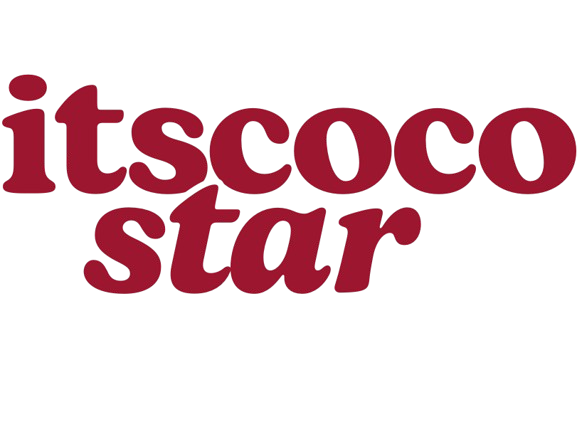In today’s fast-paced business landscape, companies are constantly seeking ways to optimize their operations and respond more effectively to customer needs. One of the innovative approaches that have emerged in this context is Demand Flow Technology (DFT). This article will delve deep into the concept of Demand Flow Technology, exploring its principles, benefits, applications, and how it differs from traditional manufacturing and supply chain methodologies.
What is Demand Flow Technology?
Demand Flow Technology is a manufacturing and supply chain management methodology that focuses on producing goods based on actual customer demand rather than forecasts or predictions. This approach is designed to streamline production processes, minimize waste, and enhance overall efficiency. At its core, DFT aligns production with real-time customer demand, allowing companies to respond swiftly and effectively to market changes.
The Origins of Demand Flow Technology
Demand Flow Technology emerged in the 1990s as a response to the limitations of traditional manufacturing approaches, such as Just-In-Time (JIT) and Materials Requirements Planning (MRP). While these systems aimed to reduce inventory costs and improve efficiency, they often struggled to adapt to rapid market changes and fluctuating consumer demands. DFT was developed to address these challenges by creating a more flexible and responsive production environment.
Core Principles of Demand Flow Technology
DFT is built on several fundamental principles that guide its implementation and effectiveness:
- Customer-Centric Approach: DFT places the customer at the center of the production process. By understanding and responding to actual customer needs, companies can produce only what is required, thereby reducing excess inventory and waste.
- Real-Time Demand Measurement: Unlike traditional methods that rely on forecasts, DFT emphasizes the use of real-time data to gauge customer demand. This can involve advanced analytics, point-of-sale data, and direct customer feedback.
- Flow Production: DFT promotes a flow-based production system where products move seamlessly through various stages of manufacturing. This reduces bottlenecks and enhances the overall speed of production.
- Cross-Functional Collaboration: Successful implementation of DFT requires collaboration across different departments, including marketing, sales, production, and logistics. This ensures that all aspects of the business are aligned with customer demand.
- Continuous Improvement: DFT encourages a culture of continuous improvement, where processes are regularly assessed and optimized based on changing customer needs and market conditions.
Benefits of Demand Flow Technology
Implementing Demand Flow Technology can yield numerous advantages for businesses, including:
- Reduced Lead Times: By aligning production with actual demand, companies can significantly reduce lead times. This agility allows businesses to respond to customer orders more quickly, enhancing customer satisfaction.
- Lower Inventory Costs: DFT minimizes excess inventory, which can tie up capital and increase storage costs. By producing only what is needed, companies can free up resources for other strategic initiatives.
- Enhanced Product Quality: With a focus on flow and continuous improvement, DFT can lead to higher product quality. As production processes are streamlined, opportunities for defects and errors are reduced.
- Increased Flexibility: DFT allows businesses to adapt more easily to changing market conditions. This flexibility can be crucial in industries where customer preferences are rapidly evolving.
- Better Customer Satisfaction: By producing goods that directly reflect customer demand, companies can enhance their ability to meet customer expectations, leading to higher levels of satisfaction and loyalty.
Implementing Demand Flow Technology
The successful implementation of Demand Flow Technology requires careful planning and execution. Here are key steps to consider:
- Assess Current Processes: Begin by evaluating existing production and supply chain processes. Identify areas where demand forecasting is leading to inefficiencies or excess inventory.
- Invest in Technology: Leverage technology to gather real-time data on customer demand. This may involve implementing advanced analytics, customer relationship management (CRM) systems, and integrated supply chain management software.
- Redesign Production Layout: Optimize the physical layout of production facilities to promote a flow-based approach. This may include reorganizing workstations, reducing transport distances, and eliminating bottlenecks.
- Train Employees: Ensure that all employees understand the principles of DFT and their role in the process. Training programs can help instill a culture of responsiveness and continuous improvement.
- Foster Cross-Functional Collaboration: Encourage collaboration between departments to ensure that everyone is aligned with customer demand. Regular meetings and communication can facilitate this alignment.
- Monitor and Adjust: After implementation, continuously monitor the effectiveness of DFT and make adjustments as needed. Use key performance indicators (KPIs) to measure success and identify areas for improvement.
Demand Flow Technology vs. Traditional Methods
To fully appreciate the value of Demand Flow Technology, it’s important to contrast it with traditional manufacturing and supply chain methods:
- Forecast-Based vs. Demand-Based: Traditional methods often rely on forecasts to determine production levels, which can lead to overproduction or stockouts. In contrast, DFT bases production on actual demand, ensuring a more accurate alignment with customer needs.
- Static vs. Dynamic: Traditional approaches tend to be static, with set production schedules and limited flexibility. DFT is dynamic, allowing for rapid adjustments in production based on real-time data.
- Siloed vs. Integrated: Traditional methods often operate in silos, with little communication between departments. DFT emphasizes cross-functional collaboration, ensuring that all parts of the organization work together toward common goals.
Industries Benefiting from Demand Flow Technology
Demand Flow Technology is not limited to a specific sector; various industries can benefit from its principles:
- Manufacturing: Manufacturers can streamline their processes, reduce waste, and improve product quality by implementing DFT.
- Retail: Retailers can optimize inventory levels and ensure that products are available when customers demand them, enhancing the shopping experience.
- Automotive: The automotive industry can benefit from DFT by reducing lead times and improving the flexibility of production lines to adapt to changing consumer preferences.
- Food and Beverage: This industry can use DFT to minimize spoilage and ensure that products are produced in alignment with seasonal demand.
- Consumer Electronics: Companies in this sector can quickly adapt to fast-changing trends and technologies by implementing DFT, ensuring that they meet customer expectations.
Challenges in Implementing Demand Flow Technology
While Demand Flow Technology offers numerous benefits, organizations may face challenges during implementation:
- Cultural Resistance: Shifting to a demand-based approach may encounter resistance from employees accustomed to traditional methods. Overcoming this resistance requires effective change management strategies.
- Technology Integration: Implementing advanced technology for real-time demand measurement can be complex. Ensuring compatibility with existing systems is crucial for success.
- Training Needs: Employees may require extensive training to adapt to new processes and technologies. Providing ongoing support and education is essential.
- Data Accuracy: The effectiveness of DFT relies heavily on accurate data. Companies must establish reliable data collection and analysis processes to ensure success.
Future Trends in Demand Flow Technology
As businesses continue to adapt to changing market dynamics, several trends are likely to shape the future of Demand Flow Technology:
- Increased Automation: The integration of automation and artificial intelligence will enhance the ability to respond to customer demand in real-time, further streamlining production processes.
- Sustainability Focus: Companies are increasingly prioritizing sustainability. DFT can contribute to more sustainable practices by reducing waste and optimizing resource use.
- Enhanced Data Analytics: Advances in data analytics will allow businesses to gain deeper insights into customer behavior, enabling even more precise demand measurement and production alignment.
- Agile Supply Chains: The push for agility in supply chains will drive the adoption of DFT, as businesses seek to create more responsive and adaptable operations.
Conclusion
Demand Flow Technology represents a significant shift in how businesses approach manufacturing and supply chain management. By focusing on actual customer demand and promoting a culture of continuous improvement, companies can enhance efficiency, reduce waste, and improve customer satisfaction. As industries continue to evolve, embracing DFT will be crucial for organizations seeking to remain competitive in an increasingly dynamic market. With the right planning, technology, and collaboration, businesses can successfully implement Demand Flow Technology and reap its numerous benefits.






